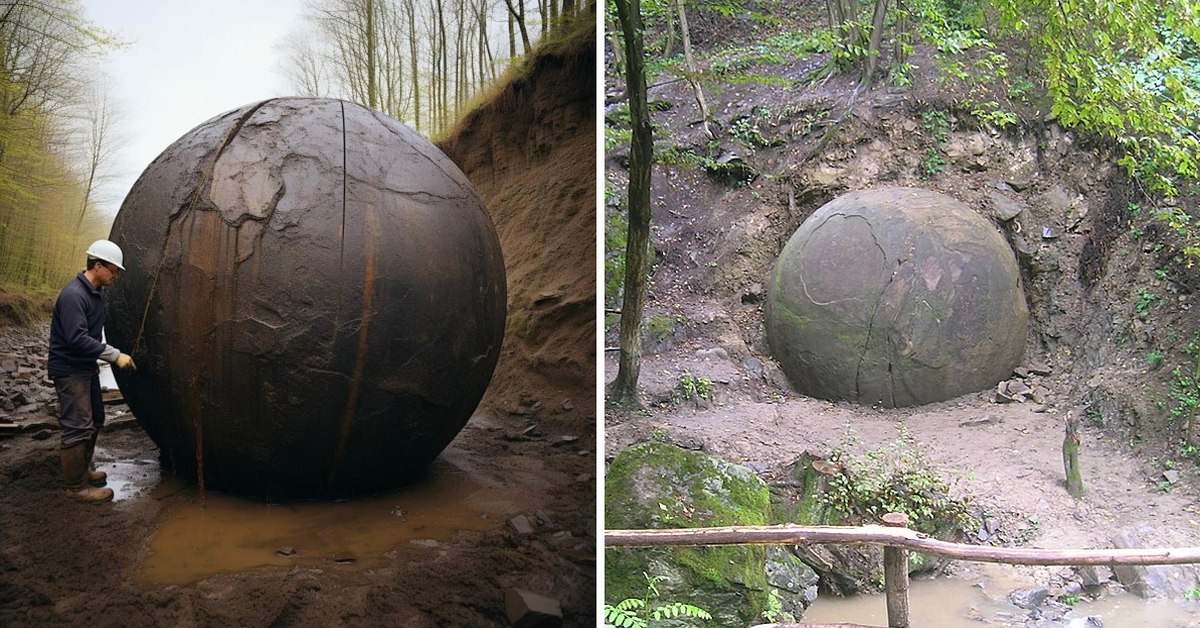If you are fascinated by ancient mysteries and lost civilizations, you might have heard of the recent discovery of a massive stone sphere in Bosnia. Here’s what we know about it.

The giant sphere, which measures about 3 meters in diameter and weighs up to 60 tons, was found in a forest near the town of Zavidovići, about 80 km north of Visoko Valley, where the controversial Bosnian pyramids are located (more on them in a second).
The man behind the discovery is Dr. Semir Osmanagich, a Bosnian archaeologist who calls himself the “Bosnian Indiana Jones” and has a reputation for making sensational and unsubstantiated claims about ancient civilizations. He last gained significant attention around a decade ago in 2005 when he made headlines by revealing the discovery of ancient pyramids connected by subterranean passages in Bosnia. However, upon examination by other archaeologists, the mounds in question turned out to be simply natural hills.
Anyway, to come back to the stone sphere he has just discovered: again, Dr. Osmanagich believes it is a man-made artifact that dates back to more than 1,500 years ago. He says that it is the most massive stone ball in Europe and that it proves the existence of an advanced lost civilization that used to live in the area. He also claims that there were once hundreds of similar spheres in Bosnia, but most of them were destroyed in the 1970s by people who wanted to use their material for cement.

Not everyone agrees with Dr. Osmanagich’s interpretation though. Many experts and critics have challenged his claims and argued that the sphere is most likely a natural formation known as a concretion. A concretion is a hard, compact mass of sedimentary rock that forms when mineral particles cement together. Concretions can have various shapes and sizes, but some of them are spherical and can reach several meters in diameter.
Concretions are often iron-rich and have a reddish color, which is exactly what Dr. Osmanagich described as a sign of human craftsmanship. Concretions are also more resistant to erosion than the surrounding rock, so they can stand out as isolated spheres over time. There are many examples of spherical concretions around the world, such as the Moeraki Boulders in New Zealand, the Cannonball Concretions in North Dakota, and the Koutu Boulders in New Zealand.

So, it is quite possible that the stone sphere in Bosnia is nothing more than a geological curiosity and not a relic of a lost civilization. However, Dr. Osmanagich is not convinced by this explanation and insists that his discovery is genuine and significant. He plans to conduct further research and analysis on the sphere and hopes to find more evidence to support his theory.
And how knows? He might be right, after all. There are indeed instances of human-crafted stone balls documented globally. Among the notable examples are the stone spheres created by an extinct civilization in Costa Rica, famously known as the stone spheres of the Diquís people. Crafted from gabbro, a volcanic rock that doesn’t naturally assume a perfectly spherical shape, these stones have been deliberately arranged in rows at specific settlements and feature additional petroglyphs. Despite their weight, which can exceed 15 tons in some cases, meticulous research into their origins has unequivocally established that they were constructed by humans.

What do you think? Is the stone sphere in Bosnia a man-made artifact or a natural phenomenon? Share your thoughts and opinions in the comments section below.
Sources: 1, 2, 3, 4, 5
